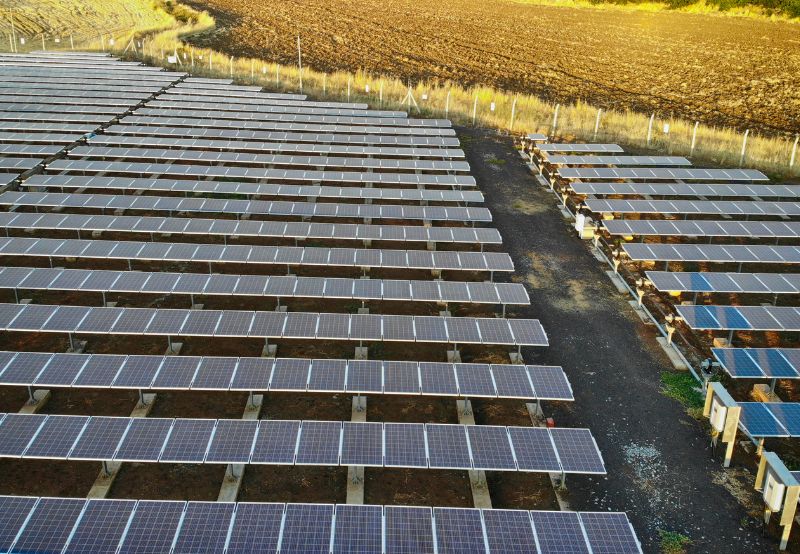The intricate relationship between climate change and poverty is a pressing issue that demands urgent attention from NGOs and policymakers alike. Climate change exacerbates existing inequalities, disproportionately affecting the most vulnerable populations who often lack the resources to adapt to its impacts. For instance, communities in developing countries, which are already grappling with economic hardships, face heightened risks from extreme weather events, rising sea levels, and shifting agricultural patterns.
These environmental changes can lead to food insecurity, loss of livelihoods, and increased health risks, creating a vicious cycle that traps individuals and families in poverty. Moreover, the effects of climate change are not uniform; they vary significantly based on geographic location, socio-economic status, and access to resources. Rural communities that depend heavily on agriculture are particularly susceptible to climate-related disruptions.
Droughts can decimate crops, while floods can wash away entire harvests, leaving farmers without income or food for their families. Urban areas are not immune either; low-income neighborhoods often lack adequate infrastructure to withstand climate impacts, leading to increased vulnerability. Understanding this link is crucial for NGOs aiming to develop effective strategies that address both climate change and poverty alleviation simultaneously.
The Impact of Climate Change on Vulnerable Communities
Vulnerable communities bear the brunt of climate change impacts, which manifest in various forms such as extreme weather events, health crises, and economic instability. For example, in regions prone to hurricanes or floods, families may find their homes destroyed and livelihoods disrupted, forcing them into temporary shelters or displacement. This not only affects their immediate living conditions but also has long-term implications for their mental health and social cohesion.
The stress of losing one’s home and community can lead to increased rates of anxiety and depression, further complicating recovery efforts. Additionally, climate change can exacerbate existing health disparities within vulnerable populations. Rising temperatures can lead to heat-related illnesses, while changing precipitation patterns can affect water quality and availability.
Communities with limited access to healthcare services are particularly at risk, as they may lack the necessary resources to cope with these health challenges. Furthermore, the economic impact of climate change can lead to job losses in sectors such as agriculture and fishing, which many low-income families rely on for their livelihoods. As these communities struggle to adapt to a changing environment, the cycle of poverty becomes increasingly difficult to break.
Grants Supporting Climate Change Adaptation and Poverty Alleviation
In response to the dual challenges of climate change and poverty, various grants have been established to support initiatives aimed at adaptation and resilience-building. These grants often focus on empowering communities through sustainable practices that enhance their ability to cope with environmental changes. For instance, funding may be directed towards projects that promote sustainable agriculture techniques, such as crop diversification or agroforestry, which not only improve food security but also enhance soil health and biodiversity.
Moreover, grants can facilitate capacity-building efforts that equip communities with the knowledge and skills needed to respond effectively to climate impacts. Training programs on disaster preparedness, water management, and renewable energy solutions are examples of how funding can be utilized to foster resilience. By investing in local knowledge and practices, NGOs can help communities develop tailored strategies that address their unique vulnerabilities while promoting economic development.
This holistic approach ensures that grant funding not only addresses immediate needs but also lays the groundwork for long-term sustainability.
Success Stories: How Grants Have Made a Difference
Numerous success stories illustrate the transformative power of grants in addressing climate change and poverty simultaneously. One notable example is a project in Bangladesh that received funding to implement community-based disaster risk reduction strategies. By training local leaders in disaster preparedness and response, the community was able to significantly reduce the impact of cyclones on their livelihoods.
The project not only saved lives but also empowered residents to take charge of their own safety and recovery efforts. Another inspiring case comes from Kenya, where a grant was allocated for a sustainable agriculture initiative aimed at smallholder farmers. Through training in climate-smart agricultural practices, farmers learned how to adapt their methods to changing weather patterns while increasing crop yields.
As a result, many families reported improved food security and increased income levels. This project not only alleviated poverty but also contributed to environmental sustainability by promoting practices that reduce greenhouse gas emissions and enhance soil health.
Challenges in Addressing Climate Change and Poverty Simultaneously
Despite the progress made through grants and initiatives aimed at tackling climate change and poverty, significant challenges remain. One major hurdle is the lack of coordination among various stakeholders involved in these efforts. Often, NGOs operate in silos, focusing on either climate adaptation or poverty alleviation without recognizing the interconnectedness of these issues.
This fragmented approach can lead to inefficiencies and missed opportunities for collaboration that could amplify impact. Additionally, securing sustainable funding for long-term projects poses another challenge. Many grants are short-term in nature, which can hinder the ability of organizations to implement comprehensive strategies that require sustained investment over time.
Without ongoing support, successful initiatives may struggle to maintain momentum or scale up their efforts. Furthermore, political instability and changing government priorities can complicate the landscape for NGOs working at the intersection of climate change and poverty alleviation.
The Future of Grants in Tackling Climate Change and Poverty
Integrated Solutions for a Sustainable Future
Funders are increasingly aware of the need for holistic solutions that address both environmental sustainability and social equity. This shift could lead to more innovative funding models that prioritize long-term investments in community resilience.
Leveraging Technology for Enhanced Grant Effectiveness
Moreover, as technology continues to advance, there is potential for leveraging digital tools to enhance grant effectiveness. For instance, data analytics can help identify vulnerable communities more accurately and assess the impact of funded projects in real-time. This data-driven approach can inform decision-making processes and ensure that resources are allocated where they are needed most.
A Collaborative Effort for a Resilient Future
In conclusion, addressing the dual challenges of climate change and poverty requires a concerted effort from NGOs, funders, and communities alike. By understanding the link between these issues and implementing targeted strategies supported by grants, we can create a more resilient future for vulnerable populations around the world. The success stories emerging from various initiatives serve as a testament to what is possible when we prioritize collaboration and innovation in our efforts to combat these pressing global challenges.




